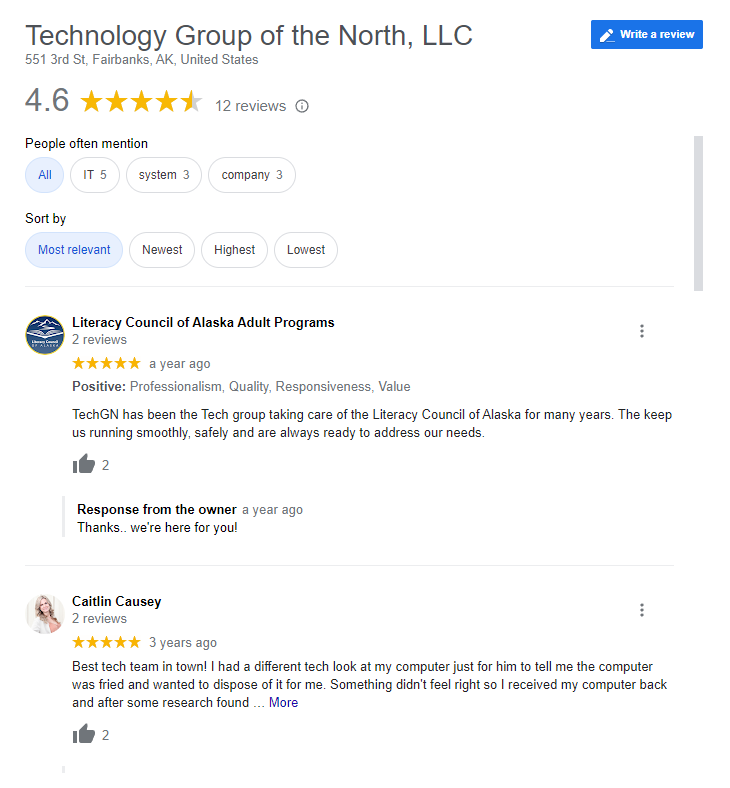As technology continues to reshape how businesses operate, one area that has seen significant transformation is communication. Traditional phone systems are no longer enough for the modern workplace. Enter VoIP—Voice over Internet Protocol—a cloud-based communication solution that allows voice calls over the internet rather than standard phone lines.
Whether you’re running a startup or managing an enterprise, VoIP for business communication offers significant benefits, including cost savings, flexibility, scalability, and improved call management. In this blog post, TechGN breaks down everything you need to know about VoIP and why it’s a game-changer for your company.
What Is VoIP?
VoIP stands for Voice over Internet Protocol. It’s a technology that allows you to make phone calls using a broadband internet connection instead of a traditional phone line.
How It Works:
- Your voice is converted into digital data.
- That data is transmitted over the Internet.
- The receiving device decodes it into audio.
VoIP calls can be made through:
- Desk phones (IP phones)
- Softphones (apps on computers)
- Mobile VoIP apps (iOS/Android)
- Web-based calling platforms
Services like Zoom Phone, RingCentral, 8×8, and Microsoft Teams Calling use VoIP technology.
Why Traditional Phone Systems Are Fading
Legacy phone systems (like PBX or analog lines) have several limitations:
- Expensive setup and maintenance
- Fixed to one location
- Hard to scale with growing teams
- Lack of integration with digital tools
In contrast, VoIP leverages your internet connection and cloud infrastructure, making it a modern, flexible communication solution for businesses of all sizes.
What Is Microsoft SharePoint?
SharePoint Online is a team-based platform for collaboration and content management. It’s more than just storage—it’s where teams create shared spaces to work together.
Key Features:
- Create team sites and project hubs
- Centralize files, calendars, and news
- Control permissions at the folder, file, or user level
- Automate workflows with Power Automate
- Integrate with Microsoft Teams, Planner, and more
SharePoint is like a digital workplace where your entire department or project team can organize, track, and collaborate on shared content.
Top Benefits of VoIP for Business
1. Cost Savings
- No need for expensive hardware or wiring
- Lower monthly bills compared to landline providers
- Free or low-cost international calls
- No long-distance charges within most VoIP plans
A study by Tech.co found that companies can save up to 60% on phone bills by switching to VoIP.
2. Scalability
As your business grows, VoIP grows with you.
- Easily add or remove users.
- No technician visits needed
- Cloud-based administration via dashboards
Perfect for growing teams, seasonal staff, or expanding offices.
3. Remote Work Friendly
Your team can make and receive calls from:
- Office
- Home
- Mobile devices
- Anywhere with an internet connection
With features such as mobile apps and softphones, VoIP supports hybrid work models seamlessly.
4. Advanced Features
VoIP systems come loaded with innovative features:
- Call forwarding and voicemail-to-email
- Auto-attendant and IVR (interactive voice response)
- Video conferencing and screen sharing
- Call recording, analytics, and reporting
- Integration with CRM, helpdesk, and productivity apps
These tools help you deliver faster, more professional communication internally and externally.
How VoIP Enhances Team Collaboration
Effective communication is essential for successful collaboration.
VoIP integrates with:
- Microsoft Teams
- Slack
- Salesforce
- Zoom
- Google Workspace
This means your team can:
- Click-to-call from emails or CRM
- Chat and call on the same platform
- Automatically log customer calls in your database
- Route customer service inquiries efficiently
At TechGN, we’ve seen companies improve customer satisfaction and internal alignment by centralizing communication through VoIP.
Is VoIP Secure?
Yes—VoIP is secure, as long as you choose a reputable provider and follow best practices.
Look for features like:
- End-to-end encryption
- TLS/SRTP protocols
- Call recording access control
- Multi-Factor Authentication (MFA)
- Geo-restricted access
You can also protect your VoIP setup with:
- A strong firewall
- Updated software
- Employee training on phishing and spoofing
Setting Up a VoIP System
You don’t need a tech background to switch to VoIP.
Step-by-Step Guide:
- Choose a VoIP provider (RingCentral, Zoom Phone, 3CX, etc.)
- Select a plan based on the number of users and features
- Install IP phones or VoIP apps on devices
- Port your existing business number
- Configure your call flow (e.g., menu, extensions)
- Train your team on using the system
Some providers offer white-glove onboarding, while others provide DIY dashboards and tutorials.
Comparing Top VoIP Providers
| Provider | Best For | Key Features |
|---|---|---|
| RingCentral | Mid-sized to large businesses | IVR, analytics, integrations, mobile apps |
| Zoom Phone | Teams that already use Zoom | Cloud calling, voicemail, easy interface |
| 8×8 | Global businesses | Unlimited international calls, analytics |
| Microsoft Teams Calling | Microsoft 365 users | Full Teams integration, internal comms |
| Grasshopper | Small businesses/startups | Affordable, easy to use, virtual extensions |
Common VoIP Myths (Debunked)
| Myth | Reality |
|---|---|
| VoIP calls are poor quality | With good bandwidth, VoIP offers HD clarity |
| VoIP is only for big companies | Even solopreneurs can use it affordably |
| It’s hard to set up | Most providers offer quick setup guides |
| It’s not secure | Enterprise-level encryption is standard |
Each has its unique strengths, so choose based on your current software ecosystem and communication requirements.
Common Mistakes to Avoid
| Mistake | Better Practice |
|---|---|
| Using OneDrive for team storage | Use SharePoint for shared projects |
| No folder structure | Create logical libraries in SharePoint |
| Oversharing external links | Use expiration dates or viewer-only access |
| Not backing up files | Enable file versioning + sync to desktop |
| Ignoring permissions | Regularly review who has access |
At TechGN, we’ve helped small teams and large enterprises migrate to VoIP without disruption.
Measuring the ROI of VoIP
VoIP doesn’t just reduce costs—it improves productivity.
- Less time missed on calls
- Quicker customer responses
- Fewer dropped calls or phone outages
- Remote access reduces downtime
- Analytics help optimize call flow
Your ROI goes beyond dollars—it impacts team performance, customer experience, and scalability.
Switching to VoIP is more than a tech upgrade—it’s a strategic move that positions your business for future growth. Whether you’re trying to support a hybrid team, cut phone costs, or offer better customer service, VoIP delivers.
At TechGN, we’re passionate about helping businesses make smarter tech decisions. From choosing the right VoIP provider to integrating your phone system with CRM or Microsoft Teams, we’re here to support your communication goals.
Ready to modernize your business phone system?
Visit TechGN.com to explore VoIP reviews, provider comparisons, and actionable guides to upgrade your communication game.
Reviews
Tailoring Solutions


